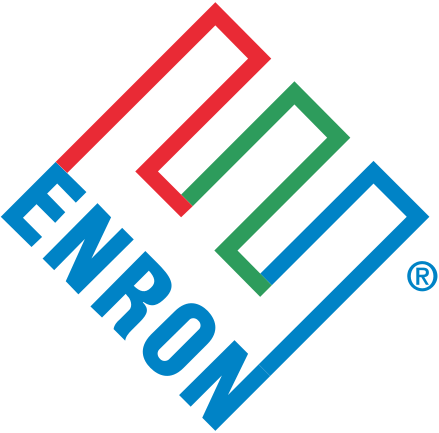It was hailed as the most innovative company in America, a hometown energy giant whose name graced one of Houston’s skyscrapers and the Astros ballpark.
Enron was founded in 1985 as a natural gas pipeline company and became one of the largest energy and commodities trading companies. Its incredible growth turned the company into the darling of Wall Street, an “it stock” that stood out even among rising tech giants during the height of the dot-com bubble. At its zenith, the self-proclaimed “world’s leading energy company” was the nation’s seventh largest corporation valued at almost $70 billion.
But it was a world of make-believe. On Sunday, Dec. 2, 2001, Enron filed what was at the time the largest bankruptcy in U.S. history after it became apparent that its gangbuster growth was based on accounting gimmicks and a web of lies. Enron’s 20,000 employees lost their jobs and $1.2 billion in retirement funds tied up in company stock; its retirees saw $2 billion of their pension funds evaporate.
Nancy Rapoport, who served as the dean of the University of Houston Law Center at the time of Enron’s collapse and wrote several books on the Enron scandal, recalled the company’s swift and stunning fall from grace.
“Before it blew up, we thought Enron was this amazing company and donor to the city of Houston, the arts and higher education,” said Rapoport, now the law school dean at the University of Nevada Las Vegas. “So it was a shock to all of us when we realized that Enron was so different from what we thought.”
Twenty years later, the shock of Enron’s downfall has long faded, but it remains a cautionary tale of corporate hubris and fraud. Its lessons still carry weight, especially as Theranos founder and CEO Elizabeth Holmes stands trial, accused of defrauding investors and patients about the viability and accuracy of its medical testing technology.
Enron’s Chairman Kenneth Lay and CEO Jeff Skilling convinced the company’s board, Wall Street analysts and investment banks of the energy company’s supposed success. Similarly, Holmes was able to sway investors and Theranos’ esteemed board including former Secretaries of State Henry Kissinger and George Shultz and Gen. George Mattis that the company could conduct hundreds of medical tests from a single drop of blood.
Rapoport said the lessons of Enron bear repeating. Corporate boards must ward against groupthink and company executives should heed Enron’s advertising tag: Ask why.
“If I had to pick a single lesson from Enron, it would be about being wary of charismatic leaders because they can charm and bully their boards into agreeing to things that in the light of day these sophisticated board members would never agree to,” Rapoport said. “Look at the board of Theranos. Like the board of Enron, you had super famous, super intelligent, super well-educated people, but they were captivated by charismatic leaders who broke down their defenses in terms of common sense.”
It’s a good trip down memory lane, so read the rest. I knew at least four people – two friends, one former co-worker who left for a job there, and a member of my extended family – who worked for Enron circa 2001. My wife later worked for Chevron, in what used to be the Enron building. The collapse of Enron began less than three months after 9/11, so to say the least we were in some very turbulent times, and there were all kinds of hot takes about how this was a massive, possibly fatal blow to Houston’s economic fortunes. All things considered, I think we’ve done all right since then. But it sure was a thing at the time.

